4 ways to weed your waterways
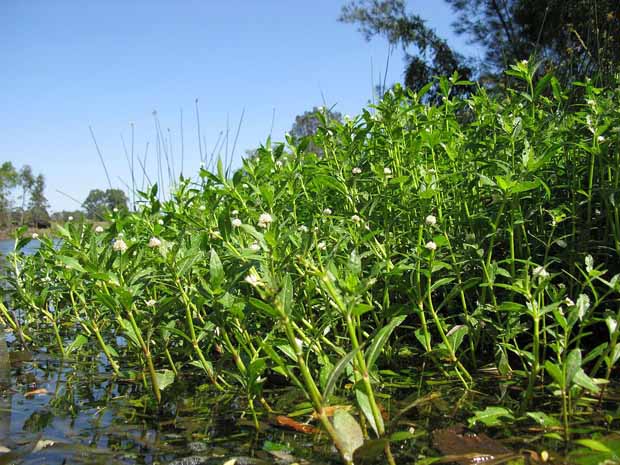
Alternanthera philoxeroides. Photo: Harry Rose
Aquatic weeds can be a major problem in lowland farming areas, but there are a few ways to tackle these pesky and persistent plants.
Words: John Clayton & John Quinn, NIWA
The information on this web page is based on research in NIWA programmes “Aquatic Plant Management” led by John Clayton and funded by the NZ Foundation for Research, Science & Technology.
Water plants can have a number of benefits for biodiversity and water quality but they can be a real problem in streams in lowland farming areas where they can block drains and streams, affect land drainage and increase flooding risk.
Ideally farmers should look for long-term sustainable management of water plants – if conditions are right for aquatic weeds, for example, low current velocity and no shade, then they will just grow back to nuisance levels again quite quickly.
Quick-fix methods, like spraying or getting in with the excavator, have their place but often they can make the problem worse in the long-term. Removing all the vegetation that is stabilising a stream bank and bed sediments can start off a cycle of bank slumping and further sedimentation that raises the streambed level and reduces drainage.
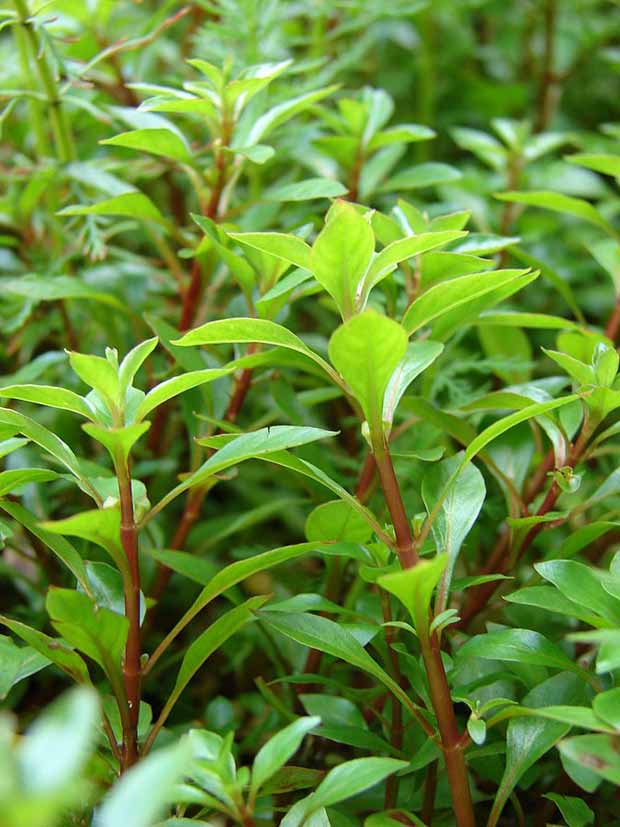
Ludwigia palustris: Photo Forest and Kim Starr
OPTION 1 – SHADE
If possible, shading the plants is the best option as a long term solution. This will not suit all streams and drains – for example, streams running north–south are harder to shade than east¬–west oriented ones.
Shade trees can be established without fencing if you use poplars that have protective sleeves to control stock damage, but the area needs to be fenced out if you plant natives or pines. Although there are costs involved with fencing and planting, and some land goes out of grazing use, there are farm benefits of increased stock shelter and windbreaks. Fencing the streams off also makes stock management easier and removes the risk of stock losses in the creek. Other benefits for stream health come from the streamside vegetation filtering out nutrients and disease-causing bugs in runoff, and the trees increase the farm biodiversity.
The cheapest option is to plant poplars or willows, with or without sleeves to prevent stock damage. If you’re planting on both sides of a stream, this will cost approximately $2000 per stream km (labour included) with sleeves, or $600 without sleeves.
Using native plants means get added benefits but increases the costs substantially. The planting is more expensive at around $10,000 per stream km for 5m-wide strips on either side. Natives also need fencing, which ranges from about $4000 per km of stream for a 2-wire electric fence to $20,000 per km for 8-wire post-and-batten fencing.
Annual maintenance of planted areas also costs about $50–$100 per km – these costs will be approximately halved if you only plant one side. In the long term, the shade options can be cheaper than ongoing mechanical or chemical control.
However, there are situations where shade trees don’t fit in with farm/stream management and quicker-fix methods are needed. Then the options are chemical control with sprays or using an excavator or mechanical weed cutter.
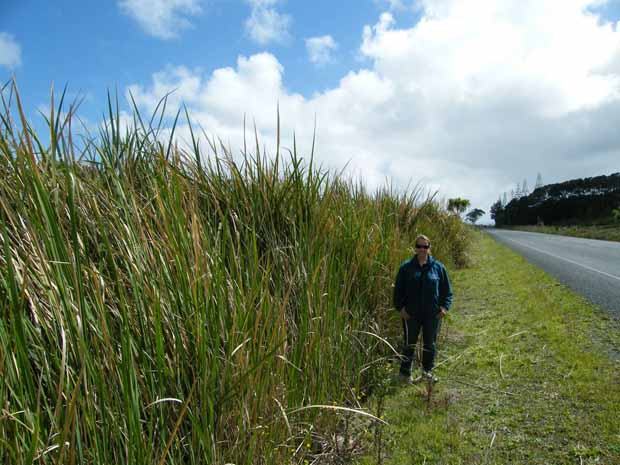
Manchurian Wild Rice. Photo: Weedbusters
OPTION 2 – CHEMICAL CONTROL
Diquat is permitted for use on submerged plants and has been used for the control of aquatic weeds in New Zealand waterways for over 40 years. Evidence suggests no risk to humans or stock drinking the water at the rates used for control of weeds. However, if water is being taken for irrigation downstream, then precautions are needed for the day or so after application because herbicides are designed to kill plants.
Using Diquat once a year costs about $2000 per hectare or $250 per km for a 2m-wide stream. Endothall (Aquatholl) was registered and approved by ERMA for use in New Zealand waterways early this year and is available either as an aqueous or a pellet formulation. Glyphosate (Roundup) can be used for controlling most bank vegetation.
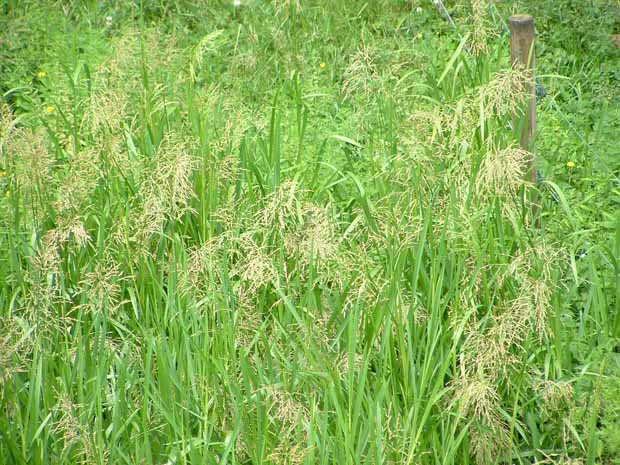
Reed Sweet Grass. Photo: Weedbusters
OPTION 3 – MECHANICAL CONTROL
There are two main options for mechanical control: an excavator with either a bucket or rake-type attachment or a mechanical weed cutter mounted on a small boat that moves up the creek.
If you are using an excavator while you are waiting for shade control to develop, you will need to leave one side of the stream accessible to the machinery, so this slows down the shade development.
Excavators cost about $1000–$3000 per km of stream per year. Some streams and drains may only ever be suitable for planting on one side to allow access for maintenance (such as sediment removal), in which case shade trees should always be planted on the northern-most banks to maximise shade.
Hawkes Bay and Bay of Plenty Regional Councils have a weed cutter that they use to help farmers manage weeds in lowland streams around the region. This costs the farmer about $150 per km of drain cut, which is comparable to herbicide application. One advantage over herbicide and scraping the weeds out with a digger is that the cutter leaves plant roots intact to stop bank slumping. But in many unshaded drains and small streams the weed cutter needs to come through 3-4 times a year to keep the plants below nuisance levels for drainage. Even so, this option can provide suitable long-term control that prevents flood problems while supporting good habitat diversity with minimal damage to the environment.
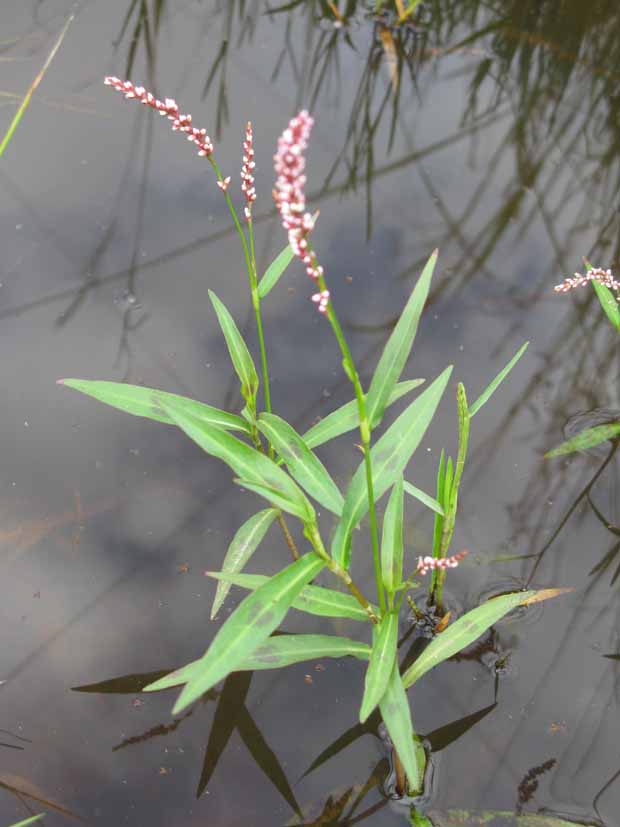
Swamp Willow Weed. Photo: Harry Rose
OPTION 4- BIOLOGICAL CONTROL
Grass carp were brought into the country in the 1960s for trials on their potential for controlling plants – no native freshwater fish feeds directly on plants. At one time only sterile fish could be used, however this restriction has been now removed.
Overall, there has been very limited use of these fish for weed control in drainage systems, partly because they can be difficult to contain within a drainage system, but also because they need better water quality than exists in many weedy drains.
Nevertheless, they can be highly effective in a limited number of circumstances. You need approval from the Department of Conservation to use grass carp, and this requires an impact assessment of how they might affect natural values and of the consequences if they were to escape.
Grass carp cost about $25 each and you would need 25–100 fish per ha of waterway, depending on the weed species and density.
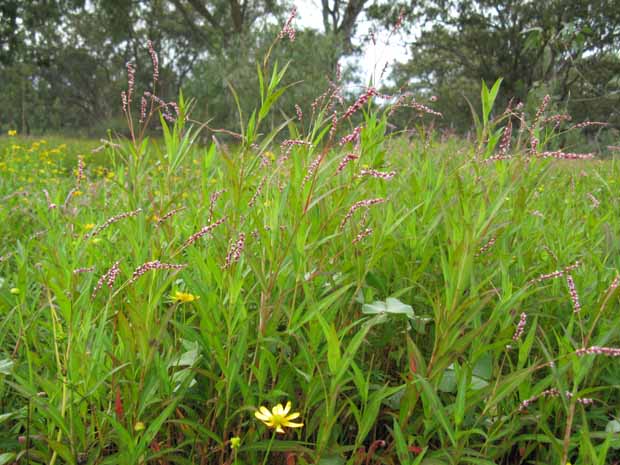
Swamp Willow Weed. Photo: Harry Rose
RECOMMENDATIONS FOR FARMERS
The first thing is to establish whether there really is a problem. Part of this is to know what the plant species are – NIWA have a species guide on their website (www.niwa.co.nz) and that can help you identify plants and learn about them.
Next you need to think about the waterway you are trying to manage and this will have a big influence on what options are appropriate. Staff in your local regional council will be able to help you work through these issues.
The bottom line is that managing aquatic plants can be an expensive exercise, so it is worth working through the issues because different weed species and waterways can present quite different management problems and potential solutions.
Some of the problem species you might encounter
 This article first appeared in NZ Lifestyle Block Magazine.
This article first appeared in NZ Lifestyle Block Magazine.
